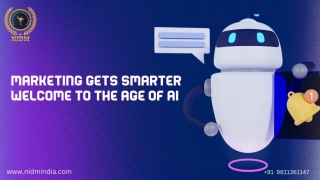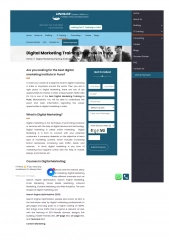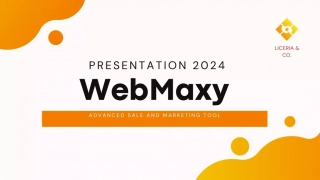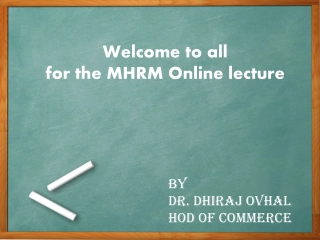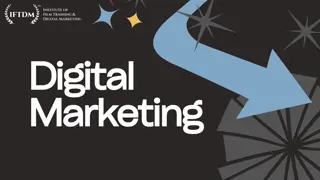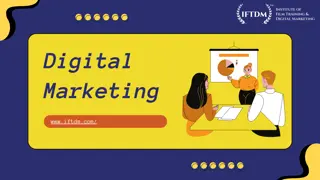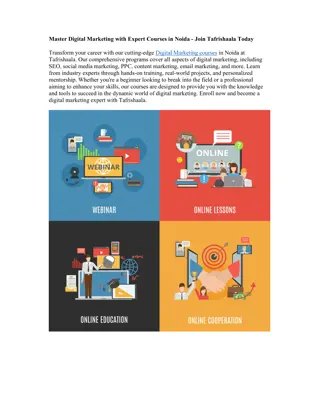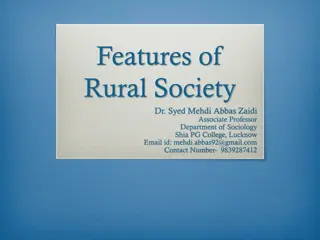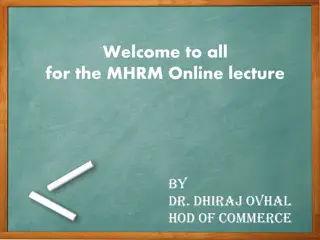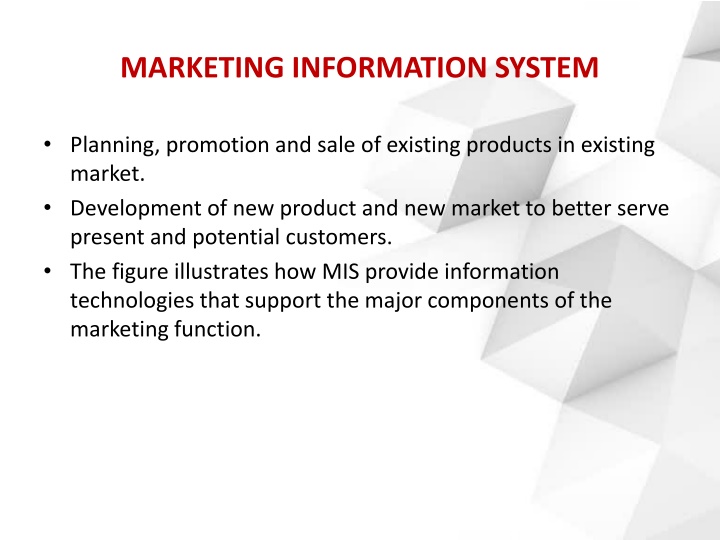
Interactive Marketing and Sales Automation Insights
Explore the role of Marketing Information Systems in planning, promoting, and selling products, including Interactive Marketing and Sales Force Automation. Learn how interactive marketing engages customers online, and how sales automation improves productivity and data analysis for better customer interactions and competitive advantage.
Download Presentation

Please find below an Image/Link to download the presentation.
The content on the website is provided AS IS for your information and personal use only. It may not be sold, licensed, or shared on other websites without obtaining consent from the author. If you encounter any issues during the download, it is possible that the publisher has removed the file from their server.
You are allowed to download the files provided on this website for personal or commercial use, subject to the condition that they are used lawfully. All files are the property of their respective owners.
The content on the website is provided AS IS for your information and personal use only. It may not be sold, licensed, or shared on other websites without obtaining consent from the author.
E N D
Presentation Transcript
MARKETING INFORMATION SYSTEM Planning, promotion and sale of existing products in existing market. Development of new product and new market to better serve present and potential customers. The figure illustrates how MIS provide information technologies that support the major components of the marketing function.
MARKETING INFORMATION SYSTEM Marketing Information System Sales Force Automation Sales Interactive Marketing Advertising and Promotion Management Market Research and Forecasting Customer Service Support Product Management
Interactive Marketing A type of marketing that is based on internet, intranet, extranet, to establish two-way interaction between a business and its customers. Internet is the primary distribution channel of online marketing. Customers are not passive, i.e. active. Interactive marketing encourages customers to be involved in product development, delivery and services.
Comparing Interactive Marketing with other Forms of Marketing. Mass Marketing Direct Marketing Interactive Marketing Distribution Channel Broadcast, Print Media Postal Service Internet Nature of Consumers Passive Passive Active Marketing Strategy High Volume Targeted Goods Targeted audience Enabling Technology Desktop Publishing Web server, browser, web publishing Authors of marketing materials Ad Agencies Ad agencies, Companies Companies, Consumers Expected Outcome Volume sales Profitable Sales Customer Relationship, New ideas
SALES FORCE AUTOMATION Computers and networks are the basis for sale force automation. Sales force is outfitted with notebook computers, web browsers and sales contact management software.
This Software Connect them to marketing websites on internet and other Company Intranet Increases personal productivity of sales and speeds up the capture and analysis of sales data. Also improves delivery of information. Many companies view sales force automation as a strategic way to gain competitive advantage. For example, To record sales data To make calls on customers prospect To connect them with Network servers at company by Modem/ telephone like.
Benefits of Web based sales Force Automation Shorten the sales cycle Increase revenue through target marketing. Capture all customer information directly into database. Enhancing order management Automate the management of web leads.
SALES AND PRODUCT MANAGEMENT Sales Manager must plan, monitor and support the performance of sales people. CBIS produces sales analysis reports by product line, customer, type of customer, sales person and sales territory. Such reports help marketing manager to monitor the performance of products. Product managers also need information to plan and control the performance of specific products, product lines and brands. Computer based models may be used to evaluate the performance of current and future products.
ADVERTISING AND PROMOTION Managers try to maximize sales at lowest cost for advertising and promotion. It helps To select media and promotional methods To allocate financial resources To evaluate the results of advertising and promotion campaigns.
TARGET MARKETING Tool in developing advertising promotion strategies Concept that includes 5 components Community Content Context Demographic Online Behavior Community Web advertising messages that appeal to people in specific communities. For Example, communities of interest like arts and crafts hobbyists. Geographic communities formed by the websites of city/ local newspaper.
Content Advertising such as banners can be placed on various web side pages apart from company's home page. These messages reach targeted audience. For example, Movie ad is given on the opening page of search engine. Context Advertising is targeted only at people who are looking for information about a subject matter. For example, Vacation travel and Car rental services.
Demographic/ psychographic Types/Classes of People For Example, Unmarried, Twenty Something, Middle income, graduates. Online Behavior Each visit to a site by an individual Based on web cookie . Cookie Files enable a Company to track a persons online behavior.
Market Research and Forecasting Provide Marketing intelligence to managers. Better Marketing Forecasts. Developing more effective market strategies. Help Market researchers to collect , analyze and maintain information on market variables. Market variables includes information on customers, prospects, consumer competitors, Economic and demographic trends. Data can be gathered from Company database Data mart Data warehouse www Tele marketing Service agencies


